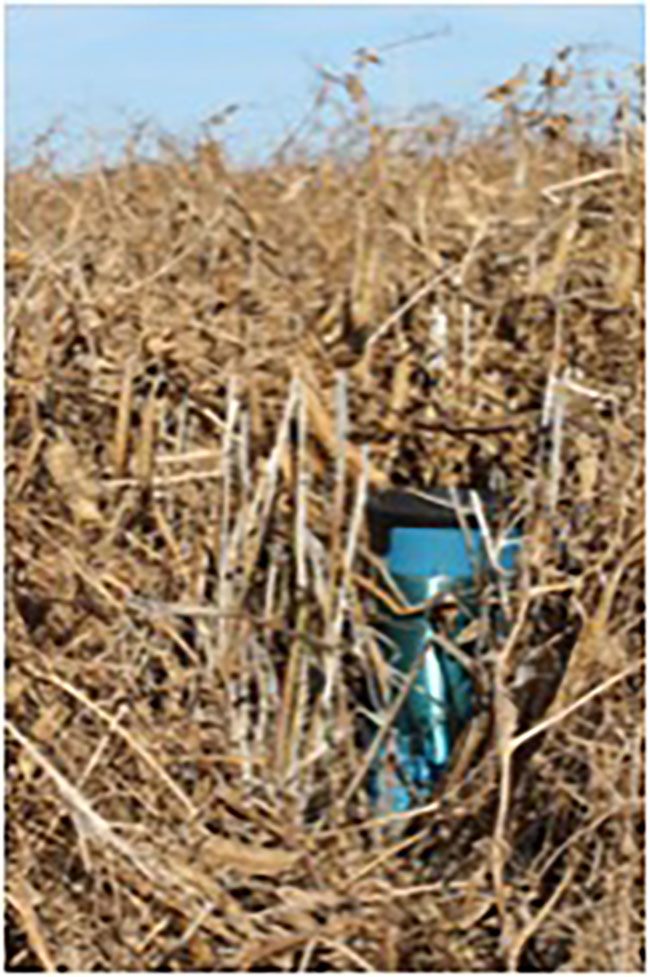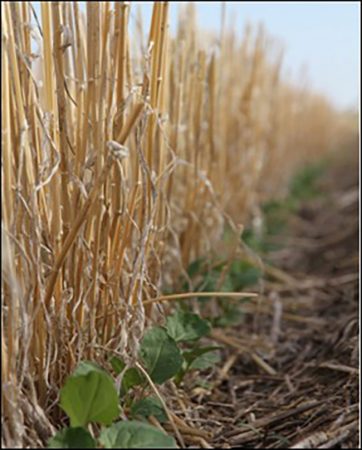
Features
Agronomy
Using crop rotation to your advantage
Optimizing crop rotation practices for the best results.
July 29, 2021 By Steve Larocque
 Crop rotation can improve harvestability, build soil fertility and help improve crop emergence. Photos courtesy of Steve Larocque.
Crop rotation can improve harvestability, build soil fertility and help improve crop emergence. Photos courtesy of Steve Larocque.
Steve Larocque, agronomist with Beyond Agronomy in Three Hills, Alta., discussed how crop rotation provides other benefits in addition to crop yields at the Top Crop Summit, Feb 23-24, 2021.
One strategy is to use crop rotation to improve harvestability. Traditionally, wheat is grown on pea stubble but I grow field peas on wheat stubble. Anyone who grows peas knows that picking peas up off the ground is time consuming and has a tremendous additional expense. We harvest wheat stubble taller – eight to 10 to 12 inches tall – and then seed peas just beside the wheat rows the next spring. The peas will eventually trellis up the wheat stubble and remain standing. As a result, harvesting is much easier and faster.
Crop rotation can also be used to build soil fertility. I grow malt barley on pulse stubble, which is another unconventional practice because people are concerned about protein content. But growing malt barley on pulse stubble is not as risky as one would think. The ultimate goal is to keep protein content under 13.5 per cent or less depending on the malting company. What happens is that the malt barley crop uses the extra subsoil moisture left behind by the pulse crop to build yield and not necessarily protein. For example, I’ve grown AC Metcalf barley on faba bean stubble with a 116-bushel yield and an average protein content of 12.2 per cent.
Rotation can also be used to build fertility. The fertility blend typically applied to a malt barley crop is 80-45-15-5, and that would work out to 276 pounds of product applied per acre. We want to build phosphorus fertility, but don’t want to slow down the seeding operation with extra product. So I cut back nitrogen by 20 pounds, which I can do because malt barley is on pulse stubble, and then increase phosphorus by 20 pounds per acre and another 15 pounds of potassium. The blend is 60-65-25-5 and the total volume applied would be equivalent at 278 pounds per acre. So I’m building phosphorus fertility through the use of crop rotation.

Crop rotation can balance C:N ratios, which prevents heavy mats of crop residue in fields.
Rotation can also be used to help improve crop emergence. Tight wheat rotations leave a lot of wheat residue that is high in the C:N ratio at around 90:1. So it takes a lot of nitrogen to break it down, and the residue hangs around a lot longer. You start to build a really thick thatch layer on the soil surface. As a result, I try to leave the wheat stubble tall at harvest, and then balance the crop rotation with peas with a C:N ratio of 15:1, barley at about 45:1 and canola at 30:1. When you use a crop rotation to balance C:N ratios, you don’t end up with fields with big, heavy mats of crop residue that can impede stand establishment.
Rotation can also be used to build resiliency. When you look at the weather cycles of too much rain and not enough rain, you can use rotations to build resiliency in your farming operation. Yields can continue to perform by building good subsoil moisture in dryland areas.
I have a soil moisture sensor mounted on my sprayer to map subsoil moisture. Lentil stubble usually has an extra one-and-a-half to two inches more soil moisture compared to canola stubble at harvest. Canola is a water hog, and so is wheat. So adding a pulse into the rotation helps to build resiliency because you have that extra soil moisture. When you look at the high yields we’ve been getting in central Alberta over the last five years – 90 to 100 bushels per acre of wheat – and sometimes it doesn’t rain for 30 or 40 days after seeding – the yield is coming from stored soil moisture.
All of these strategies bring benefits in addition to the crop rotation benefits of managing weeds, disease and insect pests.